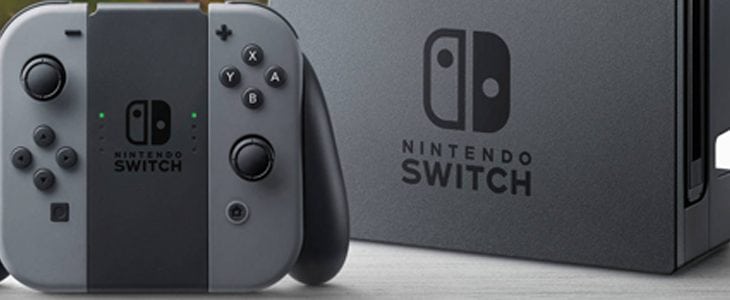
According to various reports, the Nintendo Switch is the fasting selling console produced by the Japanese company in the last few years, if not in their history.
Nintendo will not reveal official figures until April, however gaming magazine Famitsu say that more than 330,00 units had been sold in the first days in Japan, considerably more than the Wii U.
Reports also suggest that the console is selling well in Europe, with Nintendo Europe sources saying that the Switch was selling better than any previous Nintendo hardware.
Outside of Europe, Nintendo America has claimed sales had surpassed the Nintendo Wii, which went on to sell more than 100 million consoles.
On Wednesday, Nintendo shares climbed 1.2% to a two-month high in Tokyo trade.
The Switch can be seated in a dock to play games on a television, or used as a stand-alone portable device.
According to Sam Reynolds, gaming analyst with IDC, the early sales figures suggested “Nintendo’s fans like it best when it innovates.”
He told the BBC: “while a solid launch for Nintendo in Japan is expected, what’s even more impressive is its success in North America.”
According to Mr Reynolds, first weekend sales for Nintendo Switch were “miles ahead” of the Wii, the Wii U, the N64 and the Game Cube.
However, it is not all good news for Nintendo, as thousands of customers have complained about dead pixels, which leaves dark squares on the screen, often ruining a game’s immersion.
Nintendo said such pixels were “normal and should not be considered a defect”.
On top of this, Nintendo is facing more complaints about its new console, the Switch, regarding controllers failing to connect.
Nintendo has said that it is looking into the issue, and they believe it could be caused by wireless interference.
The console has received largely positive reviews and is selling well.
Concerns about the ‘Joy-Con’ controllers have been present since before the console was officially launched, voiced by those who had received units for reviewing purposes.
The issue occurs when the Switch is connected to the TV and the controllers are being used wirelessly.
On its support page, Nintendo advised users to make sure that the Switch console was placed “out in the open” and not behind a TV or under anything, particularly if the object is metal.
Users have also been advised to move closer to the console in order to improve connectivity.
The problem seems to predominantly affect the left-hand controller, with some suggesting it is due to the location of the controller’s antenna.
“The antenna is printed directly on the controller’s circuit board; it’s not a separate unit inside the device. Second, the antenna is located beneath the controller’s shoulder button and next to the housing for the controller’s joystick,” said gaming website Polygon.
“All of that could block or weaken the Bluetooth signal,” it added.
Piers Harding-Rolls, an analyst at research firm IHS Markit said:
“Obviously, if this does occur when gaming it can be frustrating, but generally I don’t think this is impacting people’s enjoyment of the platform too heavily.”
“What is perhaps making it worse is that the right Joy-Con has better connectivity which is highlighting the left’s relative weakness.
“If this is a design issue, I expect Nintendo to look closely at adjusting the lay-out of the antenna in the left Joy-Con to help solve the issue, as the fix would appear relatively straightforward.”




